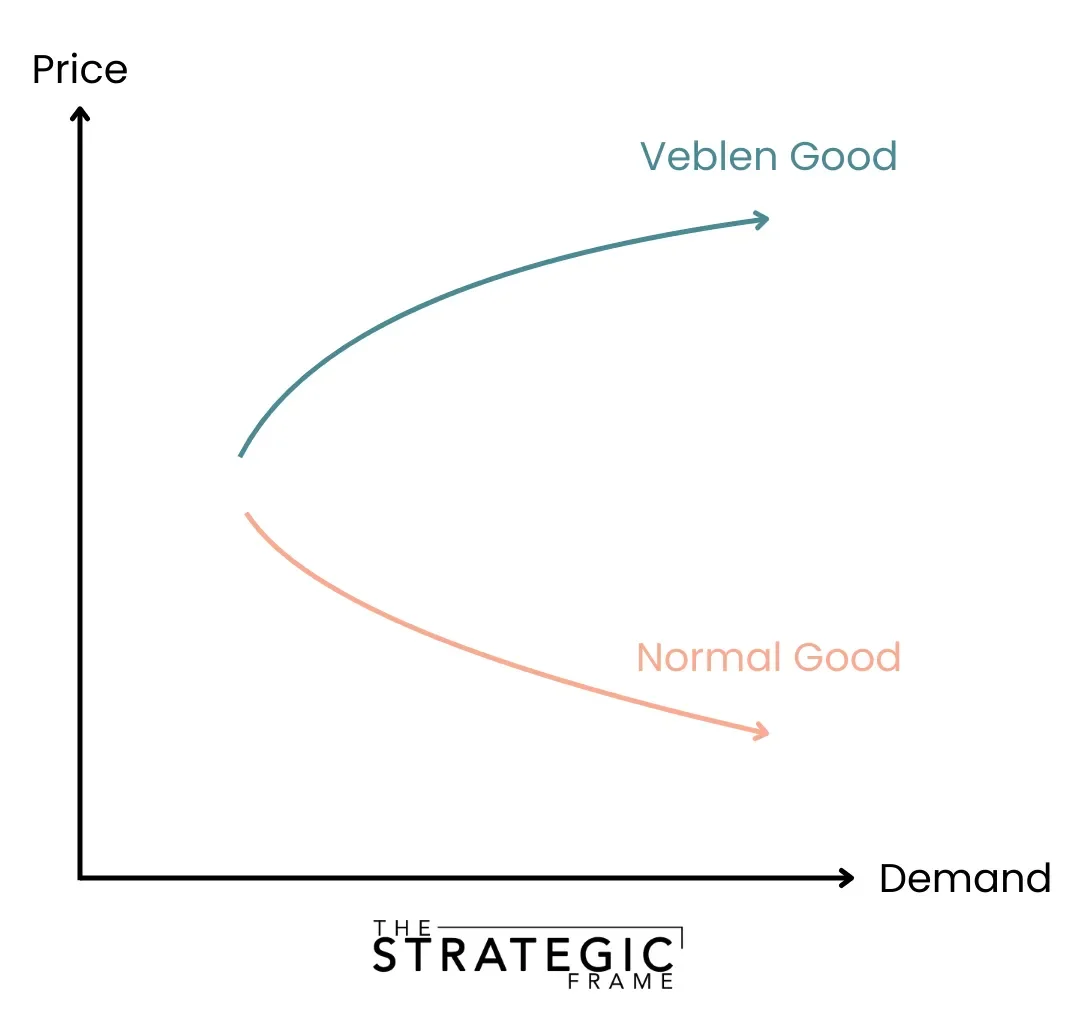Veblen Goods
When higher prices drive higher demand
EXECUTIVE SUMMARY:Veblen goods are products that become more desirable as their prices rise, because high cost signals exclusivity, quality, and status. While often associated with luxury brands like Rolex, the concept also applies outside luxury, as shown by Beckman Instruments, which boosted sales by raising prices to signal quality. By elevating pricing, signaling excellence at every touchpoint, and controlling distribution, brands can leverage the Veblen goods effect to increase demand.If you’ve ever wondered why some luxury brands raise prices and sell more, you’ve stumbled into the world of Veblen goods.
In economics, most goods follow a basic rule: when price goes up, demand goes down. But Veblen goods work in reverse: their higher prices make them more desirable, because owning them signals wealth, taste, or access.
Named after economist Thorstein Veblen, who coined the term “conspicuous consumption” in 1899, these goods aren’t just about what they do, but about what they say about the person using them.
What are Veblen goods?
Veblen goods are products or services that become more desirable as their price increases.
At its core, Veblen goods refer to luxury products, such as those by watchmaker Rolex, a brand that never discounts, steadily raises prices, and has waitlists for certain models that can stretch years.
But if your brand isn’t trying to sell luxury, can you still benefit from the concept of Veblen goods? American investor Charlie Munger says, “Yes.”
How Beckman Instruments raised prices as a signal of quality
In a 2003 talk, Munger shares a story about his friend Bill Ballhaus.
“When he was head of Beckman Instruments it produced some complicated product where if it failed it caused enormous damage to the purchaser. It wasn’t a pump at the bottom of an oil well, but that’s a good mental example. And he realized that the reason this thing was selling so poorly, even though it was better than anybody else’s product, was because it was priced lower. It made people think it was a low quality gizmo. So he raised the price by 20% or so and the volume went way up.”Wrapping It All Up
When making decisions, don’t stop at the first domino. Ask what might happen next, over and over again. Second-Order Thinking is a superpower when you're setting strategy, pricing products, choosing partners, or even crafting your brand message. So the next time you're thinking through a big decision, pause, and ask “And then what?”
Steps to apply the Veblen goods effect:
Here’s how you can incorporate lessons from Veblen goods in your strategy:
Elevate pricing deliberately: Price to reflect quality compared to your competitors, not just cost-plus-margin
Signal quality at every touchpoint: From packaging to customer service, every detail should reinforce a premium position
Control distribution: Sell through curated channels or invite-only events
Limit discounts offered: Be very strategic about if, when, and how much you offer discounts to customers
And if a luxury brand, also:
Create scarcity: limit supply to maintain exclusivity and perceived rarity
Craft a story around status: Build a brand narrative that connects ownership to identity and social standing
Wrapping it all up
Veblen goods prove that in certain markets, price is part of the product. Whether in the luxury space or not, it might be worth asking: How can higher pricing, controlled availability, and strong brand storytelling make your product more desirable rather than less?
This article is sponsored by Annieglass
Annieglass is a family-owned, solar-powered American brand creating timeless, handcrafted glassware. Shop now at https://annieglass.com/.
Sources & Further Reading:
Investopedia: Veblen Good: Definition, Examples, Difference from Giffen Good

